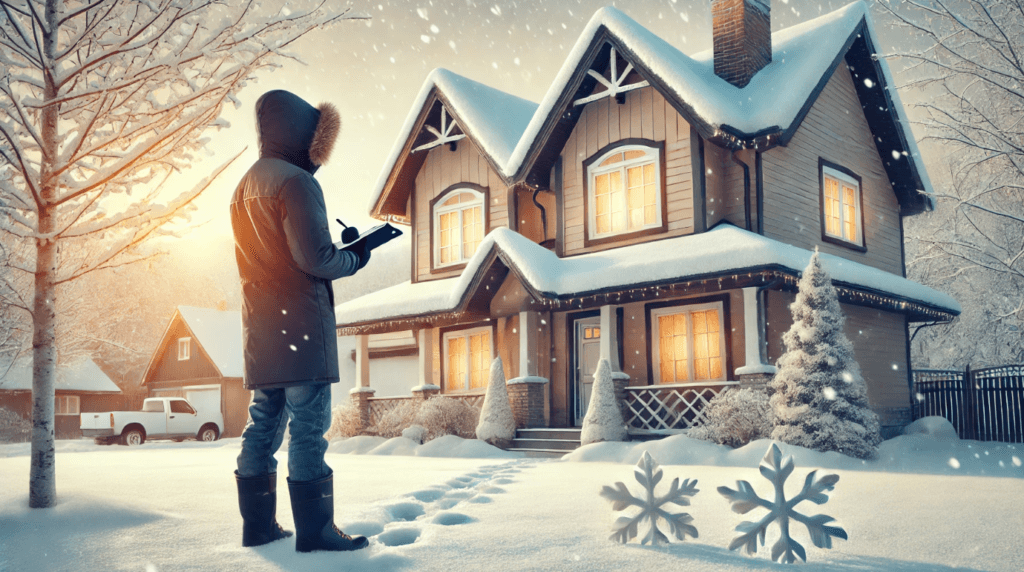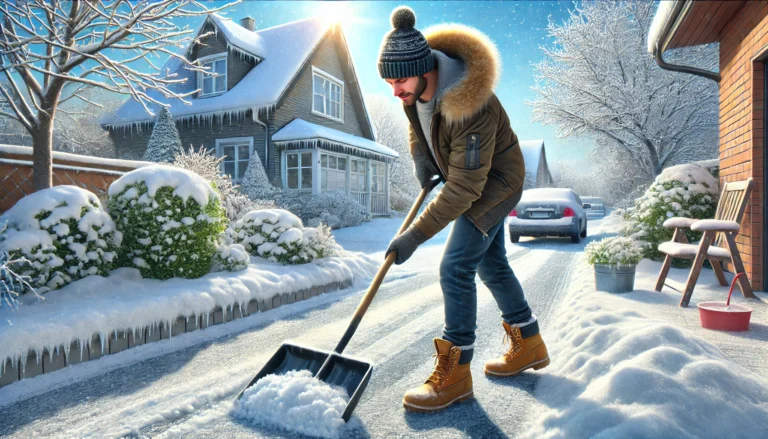
Home inspections are an essential part of the home-buying process, providing buyers and sellers with critical information about the property’s condition. Let’s look at how snow affects home inspections process. Snow-covered properties present unique challenges, potentially obscuring critical components of the home. Here’s how snow affects the home inspection and what homeowners and buyers should keep in mind.
1. Roof Inspections: Hidden Under the Snow
A home inspector typically evaluates the roof’s condition by checking for issues like missing or damaged shingles, flashing problems, and signs of wear or deterioration. However, when the roof is covered in snow, these details become impossible to assess.
Why it matters:
Roof issues can lead to costly repairs or water damage if not addressed. A snow-covered roof limits the inspector’s ability to provide a full report on its condition, leaving buyers without a clear understanding of its lifespan or repair needs.
What you can do:
- If you’re a seller, consider clearing snow from the roof if safe to do so or provide documentation of past roof maintenance.
- Buyers may want to negotiate a reinspection when the snow melts or request seller warranties for the roof’s condition.
2. Yard Grading and Drainage: Buried by Snow
One critical aspect of a home inspection is evaluating the yard’s grading to ensure water flows away from the home, preventing basement leaks and foundation damage. Snow and ice can obscure grading, drainage systems, and even evidence of past water pooling or erosion.
Why it matters:
Improper grading or drainage issues are a common source of water damage in homes, but these signs are often invisible under a layer of snow. Without this assessment, buyers could face surprises after the thaw.
What you can do:
- Sellers can share information about drainage systems, sump pumps, or prior grading work to help reassure buyers.
- Buyers might consider consulting the seller or requesting a springtime inspection to confirm proper grading.
3. Exterior Features: Limited Visibility
Inspectors assess the condition of exterior elements like siding, decks, porches, patios, and walkways. Snow and ice can obscure cracks, warping, or other signs of deterioration.
Why it matters:
Structural or cosmetic issues with exterior features can lead to costly repairs. If these features are hidden under snow, it’s hard to know their true condition.
What you can do:
- Sellers should document recent repairs or maintenance for exterior features before winter hits.
- Buyers can discuss with their inspector what areas might require closer attention once snow melts.
4. HVAC Systems: Winter Workload
Snow and cold weather don’t just hide problems—they can create them. Inspectors will assess heating systems, but heavy snow can block intake and exhaust vents, potentially causing issues with ventilation or system performance. Outdoor air conditioning units may also be inaccessible due to snow.
Why it matters:
Blocked vents can lead to inefficient operation or even dangerous conditions like carbon monoxide buildup. While HVAC systems are usually accessible for inspection, snow can complicate the process.
What you can do:
- Ensure snow is cleared away from HVAC vents before an inspection.
- For AC units, understand that a full inspection may need to wait until warmer weather.
5. Gutters and Downspouts: Covered in Ice
Inspectors check gutters and downspouts for clogs, leaks, or damage that can contribute to poor drainage. However, snow and ice buildup make it difficult to inspect these elements thoroughly.
Why it matters:
Clogged or damaged gutters can lead to roof damage, water intrusion, and foundation problems, but snow and ice often mask these issues.
What you can do:
- Sellers can provide maintenance records or clean gutters before freezing weather sets in.
- Buyers should understand that a thorough inspection of gutters might require a follow-up visit after thawing.
Tips for Navigating Winter Inspections
- Plan Ahead: If you’re buying or selling a home in winter, anticipate that some areas of the property may not be fully inspectable due to snow.
- Request Documentation: Sellers can provide maintenance records, past inspection reports, or warranties to fill gaps in a wintertime inspection.
- Negotiate Follow-Ups: Buyers may want to arrange for a reinspection or additional checks once snow has melted. Discuss this option with your real estate agent and inspector.
- Understand Limitations: Inspectors do their best, but winter inspections are inherently limited in scope. Acknowledging these challenges can help set realistic expectations.
the bottom line
Snow presents undeniable challenges for home inspections, obscuring critical areas like roofs, yard grading, and exterior features. While these limitations can be frustrating, they are manageable with proactive communication between buyers, sellers, and inspectors. By understanding how snow affects home inspection process, you can take steps to address potential concerns and ensure a smoother transaction—even in winter.
Click here to learn more about home inspections.



